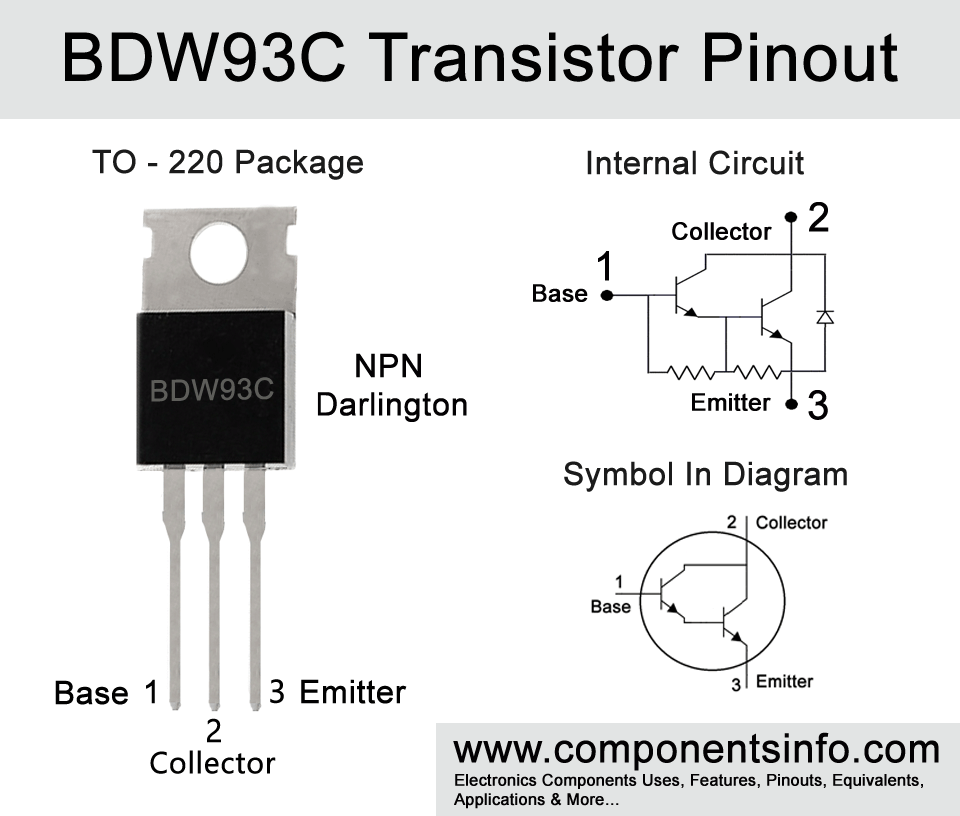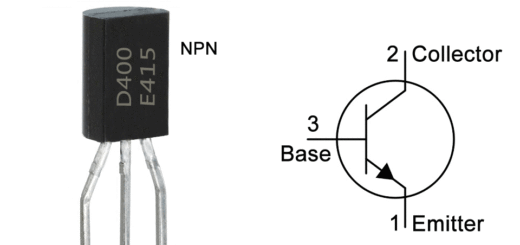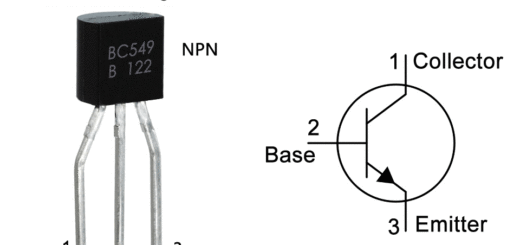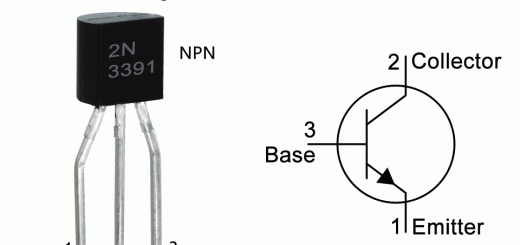BDW93C Transistor Pinout, Applications, Equivalents, Features and Other Related Info
BDW93C is a Darlington NPN power transistor designed to be used in many different applications. In this post we are going to explain BDW93C transistor pinout, applications, equivalents, features and other related info.
Absolute Maximum Ratings:
- Package Type: TO-220
- Transistor Type: NPN Darlington
- Max Collector Current(IC): 12A
- Max Collector-Emitter Voltage (VCEO): 100V
- Max Collector-Base Voltage (VCBO): 100V
- Max Emitter-Base Voltage (VEBO): 5V
- Max Continuous Base Current: 0.2A
- Max Collector Power Dissipation (Pc): 80 Watt
- DC Current Gain (hFE): 750 to 20000
- Max Storage & Operating temperature: -65 to +150 Centigrade
NPN Complementary:
PNP Complementary of BDX93C is BDW94C
Replacement and Equivalent:
BDT87, BDT85, Low voltage equivalents are BDW93C and BDW93B
BDW93C Transistor Explained / Description:
BDW93C is an NPN power transistor available in TO-220 package. It is a Darlington transistor which means it contains two transistors inside which are connected in such a way that increases the gain to a great extent. The transistor is designed to be used for audio amplification and hammer driver applications but can also be used in other applications which we will discuss later in this article.
BDW93C also available in other low voltage versions such as BDW93 (45V max), BDW93A (60V max) and BDW93B (80V max). These are the maximum driving voltage of the transistor or in other words we can say that these are the max limits of load voltage we can drive with these transistors.
Looking at the absolute maximum ratings of the transistor the maximum collector- emitter voltage is 100V, max collector-base voltage is also 100V, collector current is 12A, base current is 200mA and collector power dissipation is 80W
The pin configuration of the transistor is also very easy to understand. When looking from the front / part number side the first pin is “Base” second pin is “Collector” and the third pin is “Emitter”.
Where We Can Use it & How to Use:
The BDW93C is designed to be used in many applications such as audio amps and hammer drivers but can also be used in other applications such as control and driver circuits, alternator regulators, and Ignition systems. Besides these uses it can also be used in a wide variety of different applications.
For using this transistor first of all check its pinout then if you want to use it as a switch connect the emitter pin with the negative rail of the circuit, connect its base with the input signal from which you want to control the load and the collector pin with the negative side of the load and the positive side of the load will be connected with the positive rail of the circuit. On the other hand, if you want to use in as an amplifier then first you have to understand your requirements and then build the circuit according to it.
Applications:
Voltage regulators
Relay Drivers
DC to DC Converter
Inverter Circuits
Motor Control
Audio power amplifier
Switching regulator
Voltage Regulation
Driver circuits
Pulse Generator
Switching Circuits
Motor Control
LED Drivers
Audio Amplifiers
Voltage inverters
Battery Operated Applications
Safe Operating Guidelines:
Here are the operating guidelines of the transistor.
- For safe operation, it is important to not use the transistor to its absolute maximum ratings and always stay 20% below from these ratings.
- Therefore the max collector current of the transistor 10A, so do not drive load of more than 8A.
- The maximum collector-emitter voltage is 100V so we will not drive load of more then 80V.
- The operating temperature of the transistor should be maintained between -55°C to 150°C.
Datasheet:
To download the datasheet just copy and paste the below link in your browser.
https://datasheetspdf.com/pdf-down/B/D/W/BDW93C_FairchildSemiconductor.pdf



